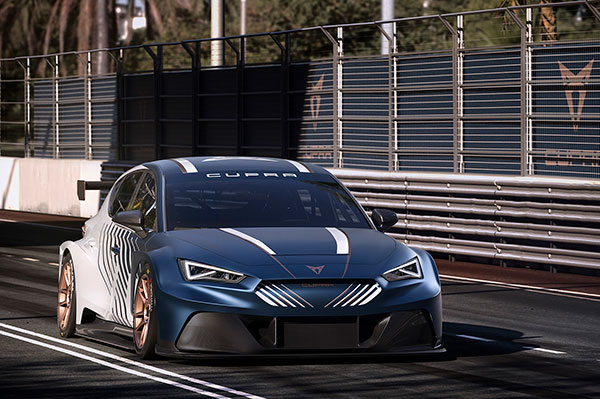PTC Gears Up to Help CUPRA Build Electric Racecar
The CUPRA Racing Team, who also use PTC’s PLM Windchill solution as its main information management system, has used Creo software.

CUPRA, a Spanish automotive brand, has built a 100% electric racecar, thanks to the help of PTC software. Image courtesy of PTC and CUPRA.
Latest News
May 27, 2022
Using PTC technology has enabled CUPRA, a Spanish automotive brand with a focus in racing to build a 100% electric racecar.
CUPRA has been working with the IoT specialist for more than two decades and continues to invest in embracing the full functionality of PTC’s Creo (CAD) and Windchill PLM solutions.
This approach is translating into improved performance across 70 races last year and is providing a production blueprint to support the firm’s electrification strategy and the development of its Extreme E and FIA ETCR.
“We started using PTC solutions in 1998; it was groundbreaking then and continues to be today,” explains Jaume Tarroja, head of Full Vehicle Design at CUPRA Racing. “We increased our efficiency and changes were easier to implement.”
Tarroja says that since working with PTC it has helped CUPRA reduce parts development and lead times as well. “We used to design the components in 2D and then they were sent to be manufactured—with the consequent errors that could occur, he adds. “Now we can view the car in 3D with all the components assembled. In fact, we can visualize the whole car on the computer screen.”
The CUPRA Racing Team, who also use PTC’s PLM Windchill solution as its main information management system, has used Creo software, starting with top-down design providing a skeleton model to define the general structure of the vehicles.
Engineers can now design and assemble components so that, if a redesign or variation of the skeleton model takes place, these changes are
automatically implemented to all components.
Other benefits of the PTC technology include finite element parts simulation, streamlining the creation of metal components and now being able to simulate the piping and cabling so it's known that everything works well at the first attempt.
The design improvements have helped CUPRA Racing achieve lighter parts while achieving higher performance from its vehicles.
“The CUPRA Racing roadmap includes new PTC Creo features that will increase its competitiveness. New modules to be implemented include IA-controlled generative design, optimized design for additive manufacturing, and behavioral modeling,” adds Paul Haimes, vice president of Solutions Consulting at PTC.
Sources: Press materials received from the company and additional information gleaned from the company’s website.
More PTC Coverage
Subscribe to our FREE magazine, FREE email newsletters or both!
Latest News
About the Author
DE’s editors contribute news and new product announcements to Digital Engineering.
Press releases may be sent to them via DE-Editors@digitaleng.news.







